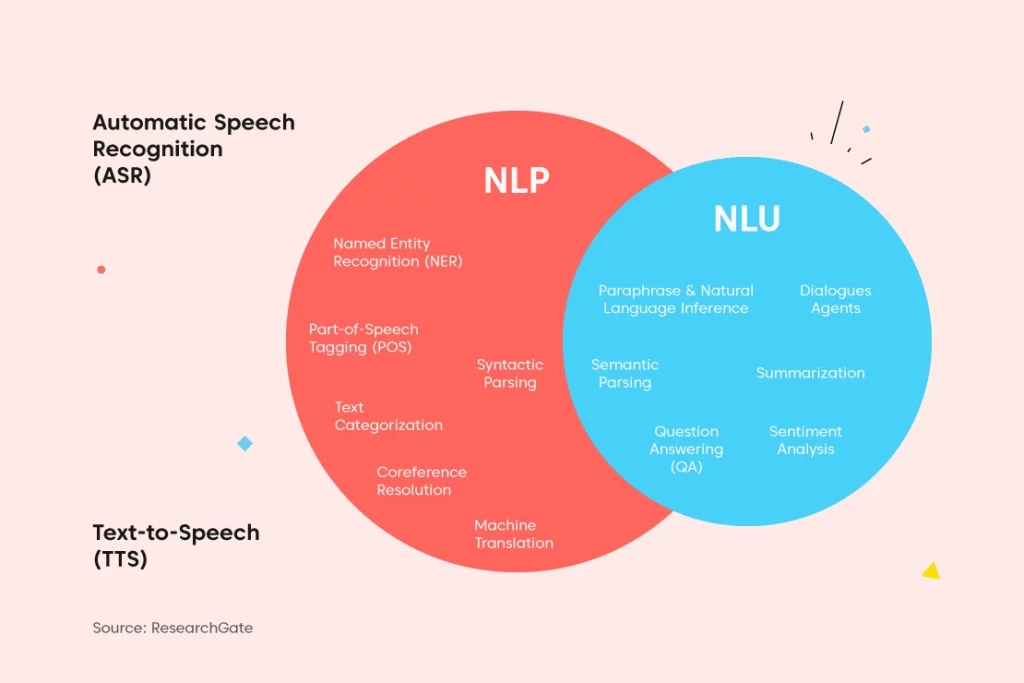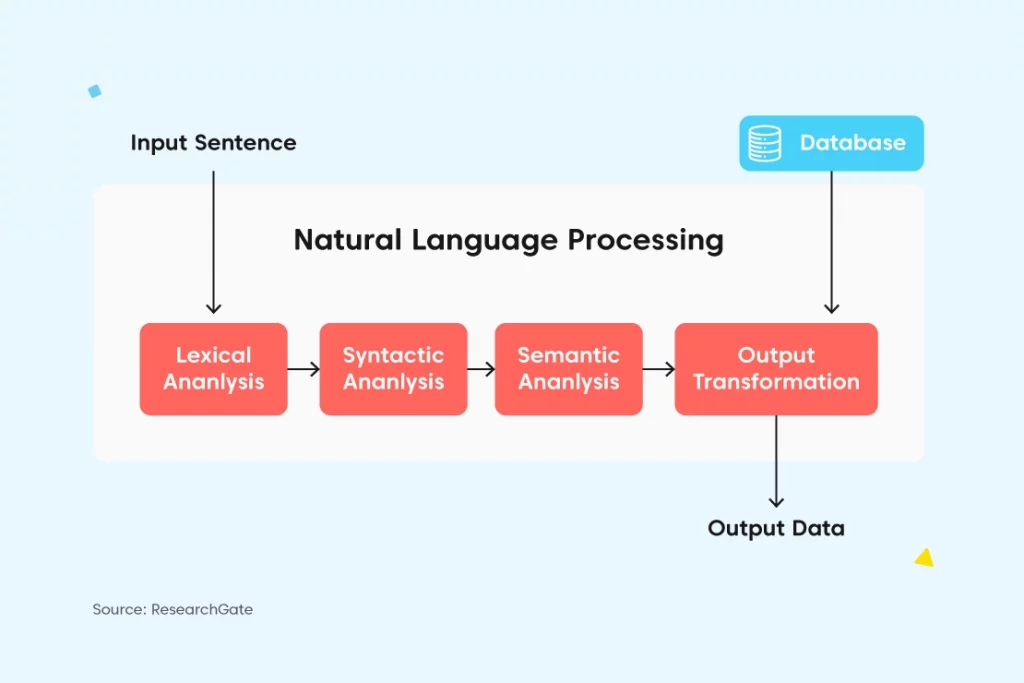Chatbots are critical elements in online user interactions. Automated responses driven by predetermined patterns of user correspondence are fed into the programing of chatbots to generate default responses for frequently asked queries and questions. It helps reduce response time, optimize human resource deployment and control costs for enterprises.
Chatbots, when equipped with Artificial Intelligence (AI) and Natural Language Understanding(NLU), can generate more human-like conversations with the users. Digital assistants equipped with the NLU abilities can deduce what the user ‘actually’ means, regardless of how it is expressed.
Industry trends – Predictions for 2022
1. Enterprises will have to focus on a data-first approach and enable AI-powered NLU chatbots to service routine tasks and facilitate new revenue streams
2. AI-driven NLU chatbots applications will continue to evolve, ML and deep learning platforms will go mainstream
3. NLU equipped chatbots will eliminate human intervention for repetitive tasks and accelerate manual queries resolution time
4. Organizations will invest in automated modernization for enhanced user experience online, thereby reducing time spent on menial tasks
5. NLU will redefine the role of chatbots for a richer user experience and eliminate or reduce dependency on Customer Service Executives
What is natural language understanding (NLU)?
According to the Gartner IT dictionary, “Natural-language understanding (NLU) is the comprehension by computers of the structure and meaning of human language (e.g., English, Spanish, Japanese), allowing users to interact with the computer using natural sentences.”
In other words, NLU is AI-driven software that interprets unstructured data and text input by the user, translates it into computer language for the system to understand, process and produce an output in a language that a user can understand. The input and output are customized to respond in preferred international or regional languages to enhance user convenience.
How does natural language understanding work?
Natural Language Understanding is the part of Natural Language Processing that deals with understanding and is, therefore, the most challenging part for a machine to decode. It involves the computer understanding each word’s meaning, analyzing the word as a noun or a verb, its tense and so on. Part-of-speech tagging (POS), a lexicon or a vocabulary and a set of grammatical rules are embedded into the system’s algorithm.
The machine should understand what is spoken or typed by the end of the process. There are several challenges in accomplishing this, like a word with several meanings, i.e., polysemy, or different words with similar meanings, i.e., synonymy and so on. Developers can address such challenges by encoding appropriate rules into their NLU systems along with training to apply the grammar rules correctly.

Natural language understanding – Syntax and semantic analysis
Natural Language Understanding broadly involves Syntax and Semantic analysis. Let us understand with relevant examples how does Natural Language Understanding works?
Syntax
Syntax determines the arrangement of words in a sentence to make grammatical sense. The software uses syntax to find out the meaning of a language based on grammatical rules like parsing, word segmentation, sentence breaking, morphological segmentation and stemming.
Example:
When the system reads the sentence, ‘The dog barked, I woke up worriedly.’
a. The AI algorithm will divide the sentence into a dog as a noun and barked as a verb
b. It further recognizes the root of the word ‘barked’ as ‘bark’ and analyzes the text for all instances of the word ‘bark’
c. The system also recognizes the period or a full-stop that splits the sentences using sentence breaking
d. The word ‘worriedly’ would be broken into { [worried]+[ly] }, where the algorithm recognizes ‘worried’ and ‘ly’ as morphemes
e. When a handwritten note is scanned, the algorithm will analyze the message and recognize that the words have blank spaces or breaks
Semantics
Semantics is the process of using words and understanding the meaning behind those words. Natural language processing uses algorithms to understand the structure and purpose of sentences. Semantic techniques include word sense disambiguation and named entity recognition.
Example:
a. In the sentence, ‘The dog barked’, the word bark has different meanings. The algorithm can understand that the word bark here refers to a sound and not part of the tree
b. In the sentence, ‘Michelle McDonald’s son went to McDonald’s and ordered a Happy Meal.’ The algorithm recognizes the two instances of ‘McDonald’s’ as two separate entities – a restaurant and a person
NLU formulates meaningful responses based on the learning curve for the machine. It brings unprecedented levels of convenience to communication channels. NLU Chatbots can make the support process easier, faster and more convenient for users, support staff and enterprises.
Natural language processing and natural language understanding
According to Gartner IT Dictionary, “Natural-language processing (NLP) technology involves the ability to turn text or audio speech into encoded, structured information, based on an appropriate ontology. The structured data may be used simply to classify a document, as in “this report describes a laparoscopic cholecystectomy,” or it may be used to identify findings, procedures, medications, allergies and participants.”
Natural Language Processing (NLP) combines Computer science, Linguistics and Machine Learning to study how computers and humans communicate in natural language. The technology analyzes the user’s speech, breaks it down, understands it and processes it according to semantics and grammar rules, thereby;
1. Resulting in the widespread use of machine learning and data mining
2. Enabling a machine to interpret and generate human language
3. Enhancing work efficiency and improving user interaction with the help of machine
4. Removing gaps in interactions between humans and electronic devices
Natural language processing involves three stages:
Step-1 Speech Recognition: The process of translating spoken language into text
Step-2 Natural Language Understanding (NLU): Machine’s ability to understand the natural language in the spoken or expressed form
Step-3 Natural Language Generation (NLG): Computer’s ability to generate natural language

The Role of NLU Chatbots for Enhanced Customer Experience
A Chatbot is an AI-driven application deployed to carry out a brief and pointed online conversation through text or text-to-speech instead of direct contact and dialogue with an actual client service representative. It is the chatbot that interacts with users in routine product or service-related online queries. It responds to product and service queries, delivery-related complaints and more on smartphone apps and websites.
NLU is instrumental in enhancing chatbots’ ability to simulate natural language interaction. The ‘Value-Add’ that a chatbot brings enhances the overall user experience. These include:
1. Automating customer service, enhancing client experience and reducing response time
2. Optimizing user support with ‘round the clock’ service and faster resolution
3. Improving customer service and processes to boost business output
4. Enhancing consumer experience in the purchase and after-sales journey
5. Increasing the number of quality leads and pushing it a step ahead towards closure
6. Reducing dependency on client support executives
7. Improving consumer engagement and sales through social networking platforms like Instagram and Facebook or in-app / website chatbot
Customizing the input and output in preferred local, regional and international languages
A Chatbot is one of the most advanced forms of interaction between humans and machines. NLU Chatbots represents the evolution of a ‘Question-Answer System’ that leverages Natural Language Processing. It formulates answers to questions in natural language and is widely applied in end-use applications by various enterprises.
To Summarize
Enterprises are constantly looking for innovative ways to enhance user experience, boost sales and achieve business growth in a highly competitive and ever-evolving marketplace. NLU Chatbots are key AI-based technological tools that help organizations provide simulated natural language interactions with users, thereby enhancing client satisfaction levels. If you’re also looking to deploy intelligent chatbots that deliver delightful client experiences, then you are at the right place.
Request a demo and our team will help you build a chatbot that is not only powered by our cutting-edge NLP engine but also understands 100+ languages and can be deployed to more than 35 channels with a single click.

















